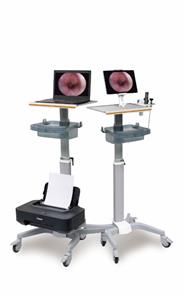Transanal Endoscopic Microsurgery (TEM) and Transanal Minimally Invasive Surgery (TAMIS)
Author:David E Stein,MD, MHCM
Transanal endoscopic microsurgery (TEM) offers several advantages over conventional transanal excision. It provides better exposure, visualization, and access to reach lesions higher in the rectum than standard transanal excision. It is associated with less morbidity and quicker recovery time than a radical transabdominal approach. The major limitations of TEM are that it requires expensive, highly specialized equipment and has a steep learning curve. [1] Accordingly, it should be performed only by skilled and experienced surgeons.
In a meta-analysis comparing TEM with endoscopic submucosal dissection (ESD) for the treatment of rectal tumors, the two procedures were found to be similar with regard to the rates of resection, adverse events, and recurrence; however, both the procedure time and the duration of hospitalization were shorter with ESD.
Transanal minimally invasive surgery (TAMIS) was developed to address some of these issues. It offers several benefits over TEM. It requires minimal setup time, and the use of existing laparoscopic cameras and instruments offers a lower-cost alternative to TEM. Nonetheless, the learning curve appears to be generally comparable.
A comparison of patients who underwent TEM (n = 53) or TAMIS (n = 68) for resection of intraluminal rectal tumors showed that although median operating time was significantly shorter for TAMIS (45 vs 65 min), blood loss was negligible in both groups. Resection margins, lesion grade, and invasion depth were comparable for the two approaches; however, the postoperative readmission rate was significantly higher in the TEM group (17% vs 4.4%).




